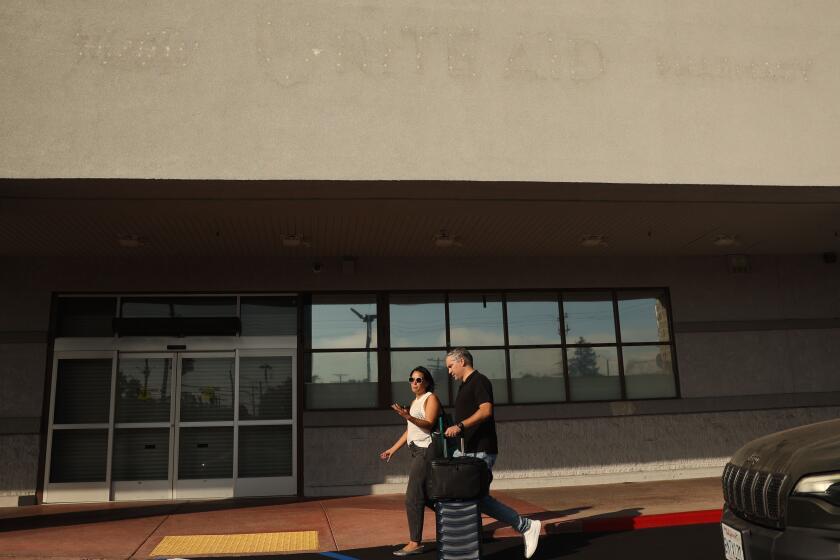Hurricane Irene losses lower than expected; insurers’ stocks rise
Hurricane Irene will hit insurance companies’ bottom lines, but property and casualty insurers’ stocks were up Monday on the sentiment that things could have been worse.
“Irene’s impact on insurers will be minimal,” said Loretta Worters, a spokeswoman for the Insurance Information Institute, an industry trade group. “Losses from this storm are likely to be between $2 billion to $5 billion, far less than the $45 billion, in 2011 dollars, from Hurricane Katrina.”
Insured losses in other notable natural disasters include more than $22 billion for Hurricane Andrew in 1992 and more than $6 billion for Hurricane Rita in 2005.
It was a good day for the stocks of property and casualty companies. Allstate Corp. rose 8.5% Monday, to $26.30 a share, and the Hartford Financial Services Group Inc. rose 13%, to $19.42. The Travelers Cos. gained 5.1%, to $50.75. Cincinnati Financial Corp. increased 3.9%, to $27.62.
“It doesn’t look like the insurers are going to be hit terribly hard,” said Paul Newsome, an insurance industry analyst for Sandler O’Neill & Partners.
“It’s still a pretty good-size storm, but the industry’s insured losses are probably” $1 billion or $2 billion, he said. “That’ll show up in a company like Allstate’s results, but it won’t be probably enough to change earnings estimates meaningfully.”
Separately Monday, Newsome upgraded Allstate stock to “buy” from “hold.” Newsome said that the period after a significant catastrophe, particularly one that attracts a lot of public attention, is often a good time to invest in an insurer.
“Now that Hurricane Irene has passed, short-term uncertainty about the catastrophe event should fall,” he said.
State Farm, which is a private company, said that by late morning Monday it had received 15,340 home claims and 1,910 auto claims in 12 states and Washington, D.C. The nation’s largest home and auto insurer has seen many downed trees, siding and shingle damage, roofing damage and a considerable amount of broken glass.
“These numbers are still very premature and will increase as our policyholders make it back to their homes to assess damage,” said Missy Lundberg, a spokeswoman for State Farm, which has dispatched more than 1,000 catastrophe claim representatives to join thousands of employees based in various states.
The insurance industry can ill afford another major disaster any time soon.
Last week, as Irene began bearing down, industry tracker A.M. Best Co. announced that, in a survey of more than 150 U.S. property and casualty insurers, catastrophe losses in the first half of 2011 were $27 billion, exceeding total catastrophe losses for 2010. Edward Keane, A.M. Best senior financial analyst, called the level of first-half catastrophe losses “unprecedented.”
Kinetic Analysis Corp., a firm that estimates the effects of disasters, said insurance industry losses will be less than $3 billion. It forecasts that total U.S. damages, including uninsured losses, will be $5 billion to $10 billion, with a best estimate of $7 billion.
When Kinetic first began tracking Irene early last week, it projected damages exceeding $20 billion, but by Friday it had trimmed that estimate in half.
In some past disasters, the losses suffered by insurers, homeowners or governments turned into gains for other industries such as construction and cleanup, said Chuck Watson, Kinetic research director.
“Irene is potentially different in impact, given the weaker state of the overall economy, especially for small businesses and homeowners that can’t handle another shock to the budget,” he said in a report. “Their reserves are lower than normal, insurance won’t be covering as much, government budgets are stretched, and there is a question mark as to if banks will want to loan money to cover repairs or cover operating losses in vulnerable areas.”
More to Read
Inside the business of entertainment
The Wide Shot brings you news, analysis and insights on everything from streaming wars to production — and what it all means for the future.
You may occasionally receive promotional content from the Los Angeles Times.









